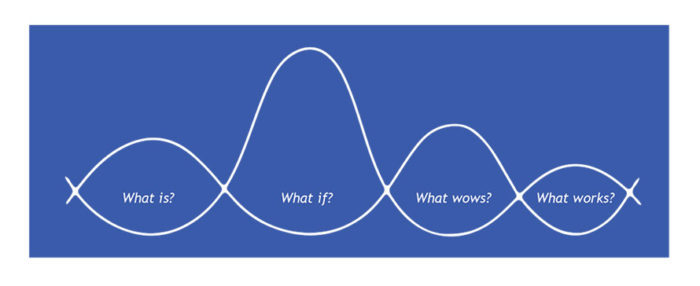Design Thinking is not Rocket Science, part 1/2
Design Thinking is not rocket science, but design thinking can be used, when planning services also for the space technology. When choosing a business to develop, design thinking plays an important role.
What is Design Thinking?
Design thinking is a process that is based on continuous innovation, and seeks answers to the following questions:
- What is? – looking at the status quo.
- What if? – looking the future via various options.
- What wows? – questions help to choose from different options.
- What works? – Looking at possible solutions on an end-user level, understanding the interaction, and making sure, that the chosen solution works

Choosing the Business to Develop Matters
When choosing the business to develop, one needs information on the status quo and the future options. One seeks to understand better what is being developed, and thus seeks answers to the questions:
- What do we develop?
- Which problems are we solving?
- Which services are we improving or building?
Information is gathered from the experts and the stakeholders. We need to know, for whom the product or service is meant; and when is it ready.
When gathering information, various methods can be used that support framing the development work and understanding the big picture. Methods can be interviews or qualitative questionnaires, user descriptions, system descriptions or user stories.
In the strategic decision-making companies can use the gathered information. Answers to concrete questions provide support:
- What does the customer need?
- What kind of services add value to the customer?
- How can we deliver the value?
One need to identify the real development areas in order to influence the businesses’ growth. In working cultures, where R&D, marketing and business development are antagonistic, it is impossible to find real development areas. On the other hand, in cultures where design thinking is part of the working culture, development comes naturally – discussions and service design tools and methods are used in everyday work.
Solutions and their validation
When concepts are being designed from chosen development areas – that is, suggestions on how a problem can be solved – one can use the most suitable one. The concepting often relates to identifying and describing a customer profile; or prototyping a concrete idea. When designing a new service, concepting supports identifying it.
A solution concept can be validated together with the users. The customer experience and user experience requirements that companies have towards their business environment and business models are realised also in a digital environment. At Huld, we start from Humane – we think about the user over the entire design lifecycle and ensure the usability and business impact of the service we design.
Text: Leena Korvenpää
Illustration: Mari Mäkelä
The sequel of this blog is now published. Read it here.